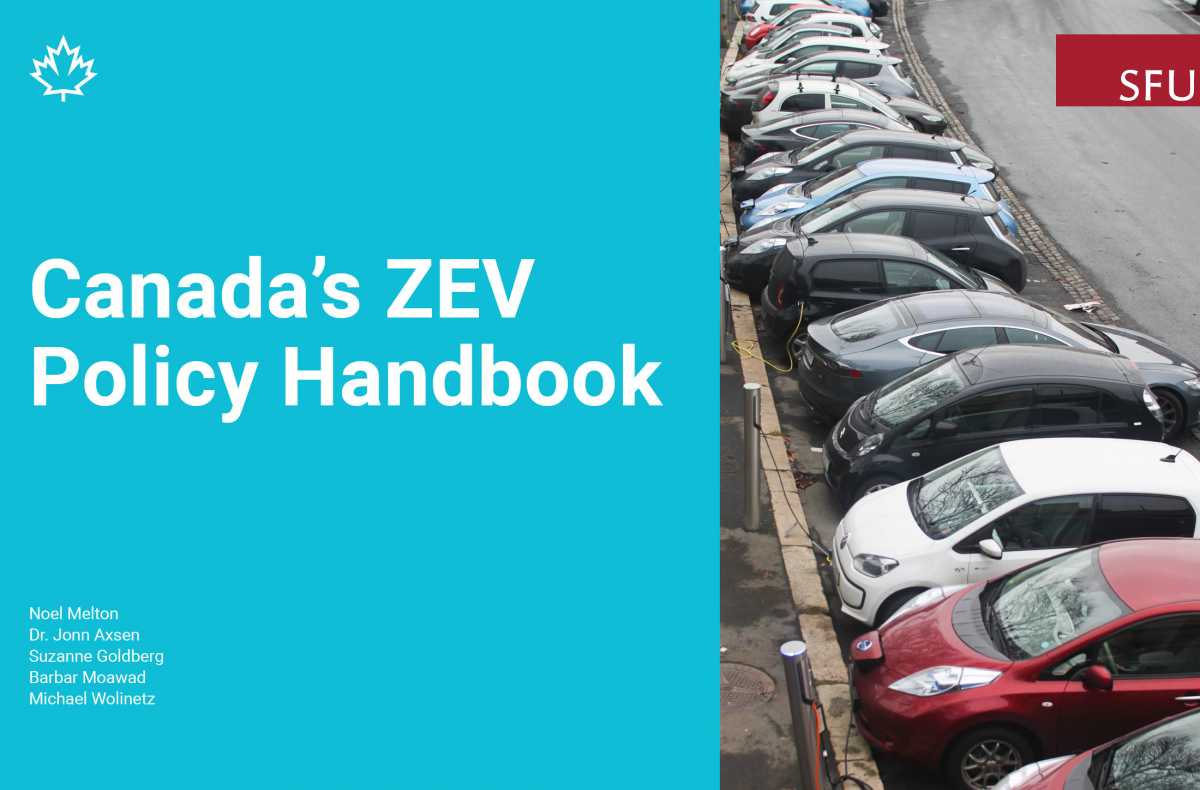Achieving Canada’s long-term greenhouse gas reduction targets will require stronger policies to encourage the adoption of zero-emission vehicles (ZEVs), according to a new report released today from Simon Fraser University’s Sustainable Transportation Action Research Team (START). Funded in part by Metcalf, the report states that current ZEV policies by themselves are insufficient to achieve our climate mitigation targets and new approaches are needed. Zero-emission vehicles are vehicles with a propulsion system that can operate without producing greenhouse gases or other air pollutants at the tailpipe. They include vehicles powered by electricity and hydrogen.
Canada’s ZEV Policy Handbook is the first comprehensive analysis of the policy options available to various levels of government in Canada. It is designed to assist decisionmakers in choosing which policies Canada should adopt in order to hit the target of 30 percent of new vehicle sales being electric by 2030. This is a commitment the Government of Canada made along with nine other countries to the Clean Energy Ministerial 30@30 global initiative.
“Our analysis identifies three policy pathways for ZEV success in Canada: incentives, a ZEV sales requirement, or tightening of emissions standards. For each option, the policy needs to be much stronger and longer lasting than anything currently in place in Canada,” according to Dr. Jonn Axsen, one of the report’s five authors and START Director. Axsen is also an Associate Professor of Sustainable Transportation in the School of Resource and Environmental Management at Simon Fraser University.
The report is not prescriptive, rather more of a toolbox. “Our handbook helps government to see the trade-offs for each policy,” says Axsen. “We developed it to illustrate the bigger picture of what policies are available in order to make Canada a true leader in zero-emissions vehicles.”
The report’s authors identified a wide range of demand and supply side policies options available to government; everything from offering financial incentives to consumers to changing building codes to mandating automakers to sell a minimum share of ZEVs. Drawing from dozens of studies, including START’s own Canada-based analyses, they evaluated the pros and cons of each separate policy employing five criteria: effectiveness, cost-effectiveness, public support, simplicity, and “transformational signal”, meaning the policy stimulates investment in ZEVs.
As a final step, the Handbook identifies three different policy pathways that could achieve the 2030 sales goals for Canada – a long-term subsidy, a ZEV mandate or a much more ambitious version of national vehicle emissions standards. “Each package presents different tradeoffs,” says Axsen. “A ZEV requirement has the highest likelihood of success, with little need for government expenditure. However, some automakers seem to be resisting such a policy. A very strong incentive strategy could also work – though it will cost the government a lot of money in the long-run.”
Along with Dr. Axsen, the reports’ coauthors are Suzanne Goldberg, Adjunct Professor, Simon Fraser University, Noel Melton, START Research Associate and Partner, Navius Research, Barbar Moawad, Analyst Navius Research, and Michael Wolinetz, Adjunct Professor START and Partner at Navius Research.


